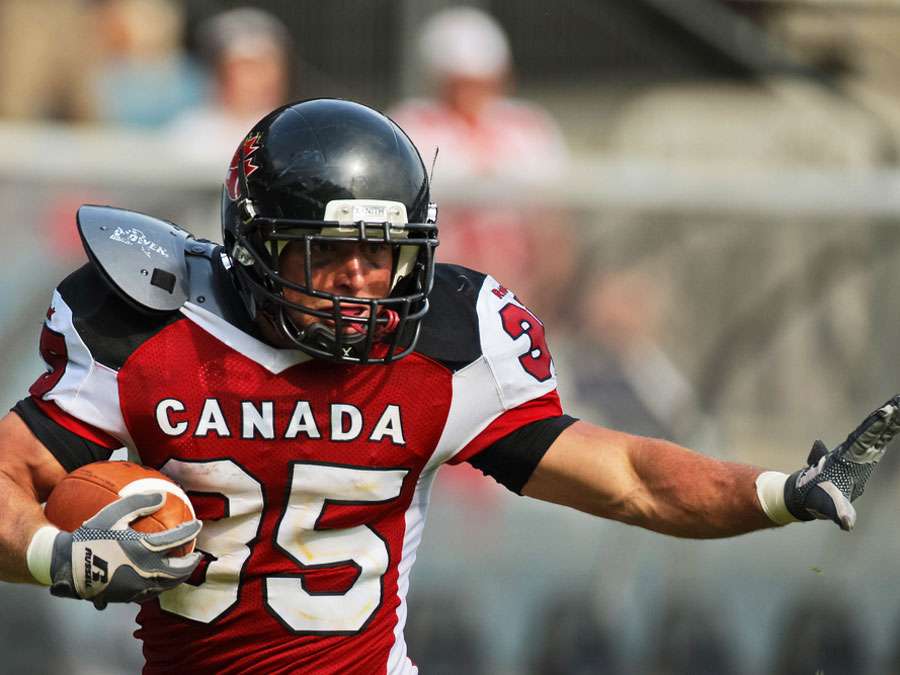Canadian Football League
The Canadian Football League (CFL; French: Canadian Football League, LCF) is a professional sports league in Canada. The CFL is the highest level competition in Canadian football. The league is made up of nine teams, each based in a city in Canada. They are divided into two divisions: four teams in the East Division and five teams in the West Division.
As of 2019, it has a 21-week regular season in which each team plays 18 games over three weeks so far. This season traditionally lasts from mid-June to early November. After the regular season, six teams compete in a three-week divisional league tournament. playoffs that culminate in the Gray Cup championship game at the end of November. The Gray Cup is one of Canada’s largest annual sports and television events.

The official name of the CFL was given on January 19, 1958, with the merger of the Interprovincial Rugby Football Union or “Big Four” (founded 1907) and the Western Interprovincial Football Union (founded 1936). Prior to the introduction of the interconnected game in 1961, Eastern teams only competed against Western teams in the preseason and the Gray Cup Championship (similar to Major League Baseball in the United States prior to the 1997 season).
There are significant differences between the CFL and American football, including CFL football fields being wider and longer, allowing for longer CFL records in run, pass, and missed shot return games.
Early history
Further information: History of Canadian football
Rugby began to be played in Canada in the 1860s, and many of the first Canadian football teams played under the auspices of the Canadian Rugby Football Union (CRFU), founded in 1884.[6] CRFU was reorganized into the Canadian Rugby Union (CRU) in 1891 and served as an umbrella organization for several provincial and regional unions. The Gray Cup was presented by Governor General Earl Gray in 1909 to the team that won the Canadian Senior Amateur Football Championship. By then, the sport being played in Canada was markedly different from its rugby origins with the introduction of the Burnside Rule, and began to become more like the American game.
For much of the early 20th century, the game was contested by intra-provincial leagues or unions. In 1907, several stronger senior clubs in Ontario and Quebec formed the Interprovincial Rugby Football Union (IRFU or Big Four). It took almost 30 years for an elite inter-provincial western union to form when, in 1936, stronger adult clubs in Manitoba, Alberta, and Saskatchewan formed the Western Inter-Provincial Football Union (WIFU). From the 1930s to the 1950s, the Big Four and WIFU gradually evolved from amateur to professional leagues, with amateur teams no longer competing for the Gray Cup. Apart from the World War II years, an amateur team last won the Gray Cup in 1936.
By the end of World War II, the WIFU game was on par with the Big Four. A few years after the restoration of peace, both interprovincial unions became openly professional. However, while the Big Four champion automatically qualified for the Gray Cup final, until 1954 the WIFU champion had to play in the semi-finals against the tournament champion. The Ontario Rugby Football Union (ORFU) is by then the only amateur union still in contention for the Gray Cup. ORFU withdrew from Gray Cup competition after the 1953 season, and the WIFU champion was given an automatic spot in the Gray Cup Finals. For this reason, 1954 is considered the beginning of the modern era of Canadian football, when only professional teams competed for the Gray Cup. Since 1965, Canada’s top collegiate football teams competing in what is now U Sports have competed for the Vanier Cup.
In 1956, IRFU and WIFU formed a new umbrella organization, the Canadian Football Council (CFC).
In 1958 the CFC left the CRU and became the Canadian Football League. As part of the agreement between the CRU and the CFL, the CFL took over ownership of the Gray Cup and the amateurs were officially ineligible to play in the Gray Cup game. However, the Gray Cup has been the de facto professional championship since 1954. The CRU remained the governing body for the amateur game in Canada, eventually adopting the name Football Canada. Initially, the two unions remained autonomous and there was no game between the eastern (IRFU) and western (WIFU) teams except for the Gray Cup final. This situation was roughly similar to how Major League Baseball operated for many years, and how the AFL and NFL operated through the 1960s until they merged in 1970.

IRFU was renamed the Eastern Football Conference in 1960 and WIFU was renamed the Western Football Conference in 1961. Also in 1961, limited intersectional play was introduced. Since by this time the West had played 16 games while the East had still only played 14, this arrangement oddly allowed both the four-team Eastern Conference and the five-team Western Conference to play three games per opponent inside the conference and one game outside. interconference opponent. It wasn’t until 1974 that the East expanded its schedule to 16 games, as did the West. In 1981, the two conferences agreed to a complete merger, becoming the East and West divisions of the CFL. The merger resulted in a fully balanced and interconnected schedule of 16 games per season (all nine teams played each other twice, once at home and once on the road). Since 1986, the regular season CFL has had 18 games.
The various histories of IRFU and WIFU account for the fact that the two teams shared basically the same name: IRFU’s Ottawa Rough Riders were often referred to as the “East Riders”, while the WIFU Saskatchewan Roughriders were referred to as the “Western Riders” or “Green Riders”. Other team names are of traditional origin. With rowing a national craze of the late 19th century, the Argonauts Rowing Club of Toronto formed a rugby team for their members’ participation in the off-season. The name of the Toronto Argonauts football team still remains, although he and the rowing club have long since parted ways. After World War II, two teams in Hamilton – the Tigers and the Flying Wildcats – merged their organizations into the Hamilton Tiger-Cats.
